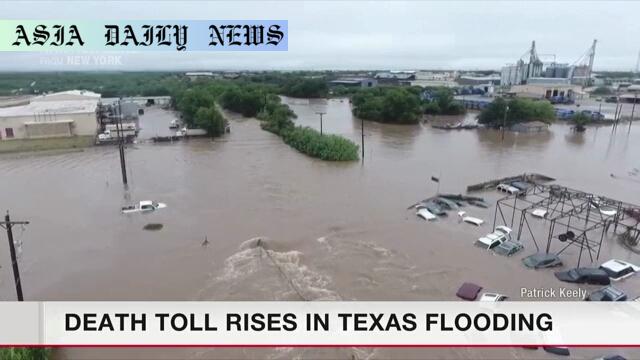Texas flooding death toll rises to 120, with over 160 missing as communities battle the aftermath of severe flash floods.
Flash floods in Texas raise death toll to 120, with 160 missing.
Rain caused a 10-meter rise in Guadalupe River within hours.
Rescue efforts include 2,100 workers, including Mexican firefighters.
Texas Governor calls for legislature to discuss emergency plans.

Unprecedented Floods Devastate Texas
The state of Texas has been left reeling after flash floods struck the region, leaving 120 individuals dead and more than 160 missing. These floods, which began last Friday, have devastated communities along the Guadalupe River. The river saw an alarming rise of approximately 10 meters in just two hours, inundating homes, businesses, and displacing thousands of residents. The swiftness of these floods caught many off guard, making rescue operations increasingly challenging. Tragically, the flood claimed the lives of several children attending a summer camp, highlighting its devastating impact on families and communities. Authorities and environmental experts called the event one of the most catastrophic flooding incidents in recent US history.
First-Hand Accounts of Survival
Drew Yancey, co-owner of a recreational vehicle campground, recounted the chaos that unfolded as the waters rapidly rose. Despite having evacuation plans in place, their sudden implementation proved arduous under the circumstances. Yancey spoke of how his property, including his personal trailer, was swept away by the relentless force of the flood. “We often encounter floods, but this was unlike anything we’ve experienced. Our preparations, which usually take 30 minutes, simply couldn’t keep up,” Yancey stated. Similar stories of survival and loss from residents in flood-prone neighborhoods paint a haunting picture of unpreparedness, underpinning the urgent need for action moving forward.
Ongoing Rescue and Recovery Efforts
In response, around 2,100 rescue workers, including international assistance from Mexico, have been deployed to conduct search and rescue operations. Their efforts include navigating hazardous environments to locate missing persons and ensuring survivors receive medical attention and shelter. However, delays in rescues due to infrastructure damages and high water levels further exacerbate the situation. Volunteers and nonprofit organizations have stepped forward, providing food, clothing, and emotional support to affected individuals. Communities and emergency response teams have underscored that the recovery process will take years, as initial assessments indicate billions of dollars in damages to properties and critical infrastructure.
Political and Legislative Reactions
Texas Governor Greg Abbott has recognized the urgent need for better preparation against such destructive natural disasters. He announced a special legislative session on July 21 to deliberate improving early warning mechanisms and emergency communication networks in the state’s flood-prone regions. Meanwhile, Senate Democratic leader Chuck Schumer raised concerns over the National Weather Service’s capacity to handle such events, attributing possible limitations to staffing reductions under former President Donald Trump’s administration. While these political developments underline the importance of government response, debates concerning accountability and resource allocation are likely to shape the narrative in the weeks to come.
Looking Forward: Strengthening Preparedness
These events highlight the increasing necessity for readiness and resilience, particularly in areas vulnerable to severe weather changes. Experts urge communities and governments to invest resources in modern forecasting tools and robust evacuation protocols. Building resilient infrastructure, improving community awareness programs, and fostering cross-border collaboration are essential steps to mitigate risks associated with future natural disasters. While the scars of this tragedy run deep, they serve as poignant reminders of the need to address climate-related challenges proactively and comprehensively.
Commentary
The Human Impact of Texas Flooding
The recent floods in Texas serve as a stark reminder of nature’s unpredictability and the human cost of natural disasters. Watching communities grapple with the aftermath of such destruction is both heartbreaking and sobering. As we process the stories of victims and survivors, one thing becomes painfully clear: these catastrophic events spare no one, regardless of age or background. The loss of so many lives, especially the young children at a summer camp, is deeply unimaginable and underscores the urgency of better protective measures for vulnerable populations.
Importance of Preparedness and Accountability
While natural disasters cannot be entirely avoided, our preparation and response significantly shape the outcomes. Drew Yancey’s first-hand account sheds light on the gap between having evacuation plans and being able to execute them under rapid circumstances. It’s troubling to think that despite visible indicators of flood risks, response measures fell short. It raises important questions about accountability at various governmental and institutional levels. Was the event’s severity underestimated, or did systemic failures play a role in the delayed response? These are questions that must be analyzed as the state works on its recovery strategies.
The Path Forward and Climate Realities
Another sobering aspect of this disaster is how it highlights the growing climate challenges. While discussions of accountability unfold, we must confront the larger conversation about climate resilience. The rapid rise of the Guadalupe River by 10 meters reflects the increasingly unpredictable and extreme weather conditions we are witnessing worldwide. Governments, institutions, and individuals alike must begin prioritizing sustainable policies, better urban planning, and investment in advanced weather technologies. Only through combined efforts can we safeguard humanity from the devastating consequences of nature’s fury.


